Art
Dickens 44 Bascom, Glue Artist
Dickens 44 Bascom is a "glue artist" or "gluer" who rose to prominence in the 1960s. One of his most famous pieces was a 1961 Ford Falcon to which he glued just about everything you could imagine: a typewriter, toilet seat, toys, Donald Duck, and other "relics of our civilization". It was one of the first cars ever decorated in this fashion (perhaps the first). He used to earn money by parking it on a busy street and collecting donations from passersby.Later he hatched a dream of building an entire castle from glued-together stuff. But, as far as I know, his castle project never came to fruition.
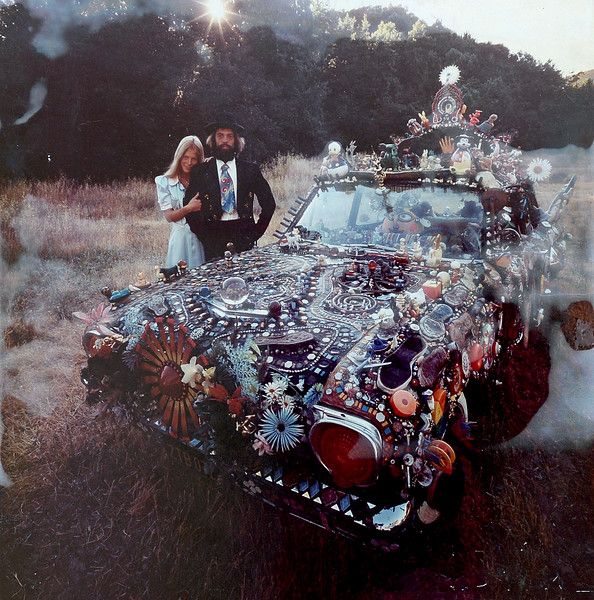
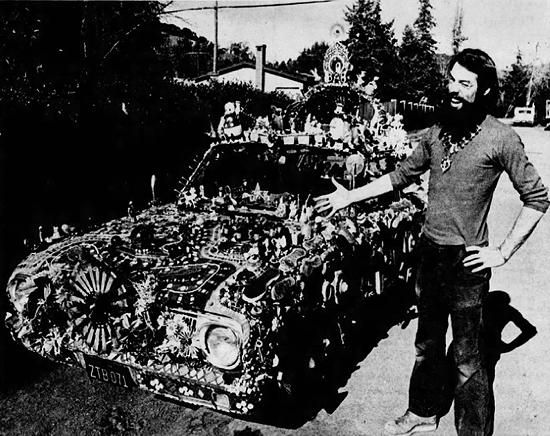
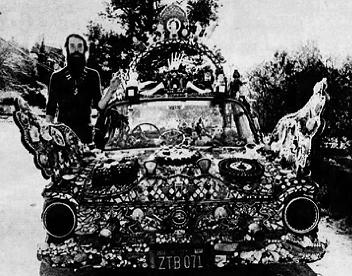
Pittsburgh Press - Mar 3, 1974
According to the Marin Independent Journal, Bascomb left the US in 1981 and lived abroad for almost four decades, in a kind of self-imposed exile, before returning a few years ago. As of 2018, he was living in a motel in San Rafael.
His middle name, "44", was given to him by his father because he was born 44 minutes after 4 am on the 44th day of 1944. (I'm sensing a recurring theme of artists with numbers for middle names, since we recently posted about Nancy 3. Hoffman who operates the Umbrella Cover Museum in Maine).
More info: Dickens44.com
Posted By: Alex - Sat Oct 03, 2020 -
Comments (2)
Category: Art, Outsider Art, Cars
The Rainbow Swash
1971: Boston Gas commissioned artist Corita Kent to decorate a gas tank next to the I-93 in South Boston. Her design featured a series of rainbow-colored stripes. But once her artwork was done, people began to claim that they could see the bearded silhouette of Ho Chi Minh in the blue stripe. The suspicion was that Kent, being an anti-war activist, had purposefully put it there. Kent always denied this.More info: The Boxer Boston
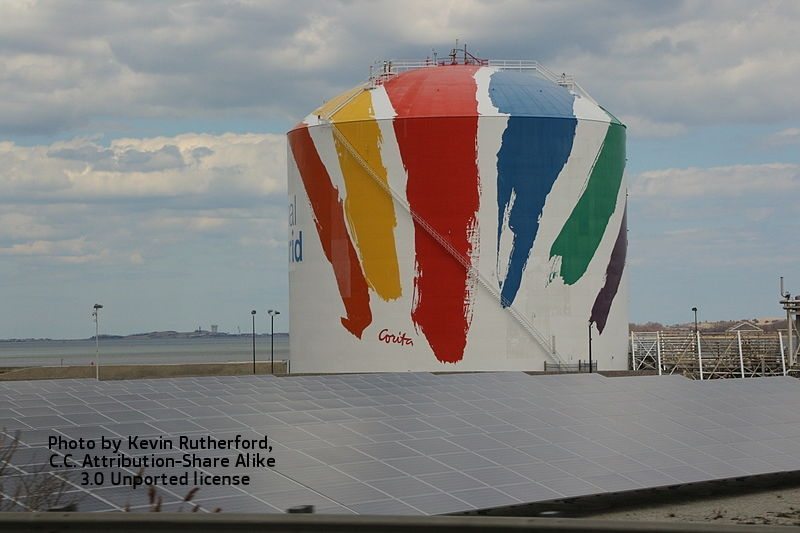
Now here, brightening drab and messy industrial surroundings, is something we would call "magnificent and fitting." But some people, alas, were upset. In Corita's free-flowing brush strokes, they professed to detect the profile of Ho Chi Minh. The mayor of Quincy, Mass., in fact, declined an invitation to attend the dedication of the rainbow colored gas tank on the grounds that he did not want to pay "homage of any nature to a communist."
Corita just laughed. "Some people see faces in the clouds," she said.
— The Montgomery Advertiser - Feb 3, 1973
Posted By: Alex - Thu Oct 01, 2020 -
Comments (2)
Category: Art, Delusions, Fantasies and Other Tricks of the Imagination, 1970s
The Return of Pipilotti Rist
Longtime WU-vies will recognize the name of this artist, since we've been covering her almost since the blog commenced. Now, late to the party, THE NEW YORKER has discovered her "genius."Let us savor one of Rist's newer works, posted to YouTube in November 2019. Don't let the fact that its views number in the low double digits dissuade you from its worth!
Posted By: Paul - Mon Sep 14, 2020 -
Comments (2)
Category: Art, Avant Garde, Ineptness, Crudity, Talentlessness, Kitsch, and Bad Art, Magazines, Europe
Nocturnal Butterflies
Posted By: Paul - Thu Sep 10, 2020 -
Comments (0)
Category: Art, Surrealism, Cartoons, 1990s
Infinity Kisses
The artwork Infinity Kisses, by Carolee Schneeman, consists of multiple self-shot photos of her kissing her cat. (See video below). She worked on it from 1982-1988.After she completed this work, it evidently didn't receive much attention from the art world, because in a 1991 essay, published in Art Journal (Winter 1991), she complained of its neglect:
As it turned out, Infinity Kisses was acquired and put on display by the San Francisco Museum of Modern Art in 1993. So, that was good news for Schneeman.
But now I'm thinking that the art world has been unfairly ignoring my pictures of my cat. This might be censorship!

My cat, Pumpkin
Posted By: Alex - Tue Sep 08, 2020 -
Comments (1)
Category: Art, Censorship, Bluenoses, Taboos, Prohibitions and Other Cultural No-No’s, Cats
Willem de Kooning toilet seat
By the mid-1980s, works by Willem de Kooning were fetching over a million dollars. So when James Garcia and Joseph Lada found a three-hole outhouse seat stored in their basement that apparently had been painted by de Kooning, they figured they had a potential masterpiece on their hands. De Kooning's wife confirmed he had painted the toilet seat "very fast" for a croquet party in 1954. He had been trying to make the wood look like marble.The sale raised the question: was this really art? Some said no. Others, such as de Kooning's friend John MacWhinnie, argued that, "It's a youthful, exuberant example of the painter at the height of his abstract expressionism... In spite of itself, it became art, simply out of a choice the de Kooning made."
It ended up selling for $50.
More info: Baltimore Sun
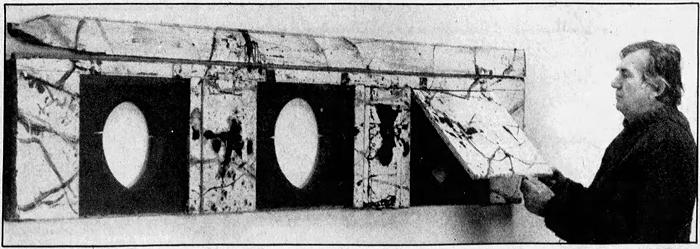
Tampa Bay Times - Feb 3, 1985
Posted By: Alex - Fri Aug 28, 2020 -
Comments (1)
Category: Art, 1980s
Artwork Khrushchev Probably Would Not Have Liked 28
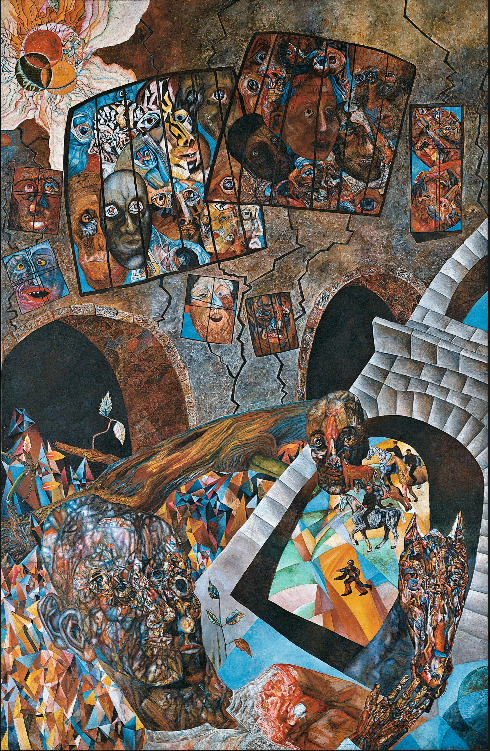
Tatiana Glebova, 1927.
In "Prision," of which there is a preparatory drawing, the painter depicts a world of multiple orientations through diverse interconnected viewpoints, and shows various heads with their musculature visible as if to reveal to us their interminable growth process. Glebova devoutly believed Filonov’s theories on the “universal flowering” and, like him, held that painting should reflect a growth process of the world similar to that of plants, according to which it was permanently active as an independent being.
Source of text.
Posted By: Paul - Thu Aug 27, 2020 -
Comments (0)
Category: Art, Avant Garde, Body Modifications, 1920s, Russia
Drive-Thru Art Exhibition
Life in the age of Covid: the Museum Boijmans Van Beuningen in the Netherlands has opened up a drive-thru art exhibition. Visitors can view the artworks from the comfort and safety of their car.However, only electric vehicles are allowed in the exhibition hall. For those who don't have an electric car, there are a few available to borrow on site.
More info: Deutsche Welle

Drive-thru @boijmans @rotterdamahoy is een unieke gebeurtenis! Trots op #rotterdam pic.twitter.com/8CFPELKtlU
— Marjolijn vd Assem (@Omasaurus) August 5, 2020
Posted By: Alex - Wed Aug 19, 2020 -
Comments (5)
Category: Art, Cars
S. P. Dinsmoor’s Garden of Eden
The oldest surviving outsider art installation in the USA.Home page.
Creator's Wikipedia entry.
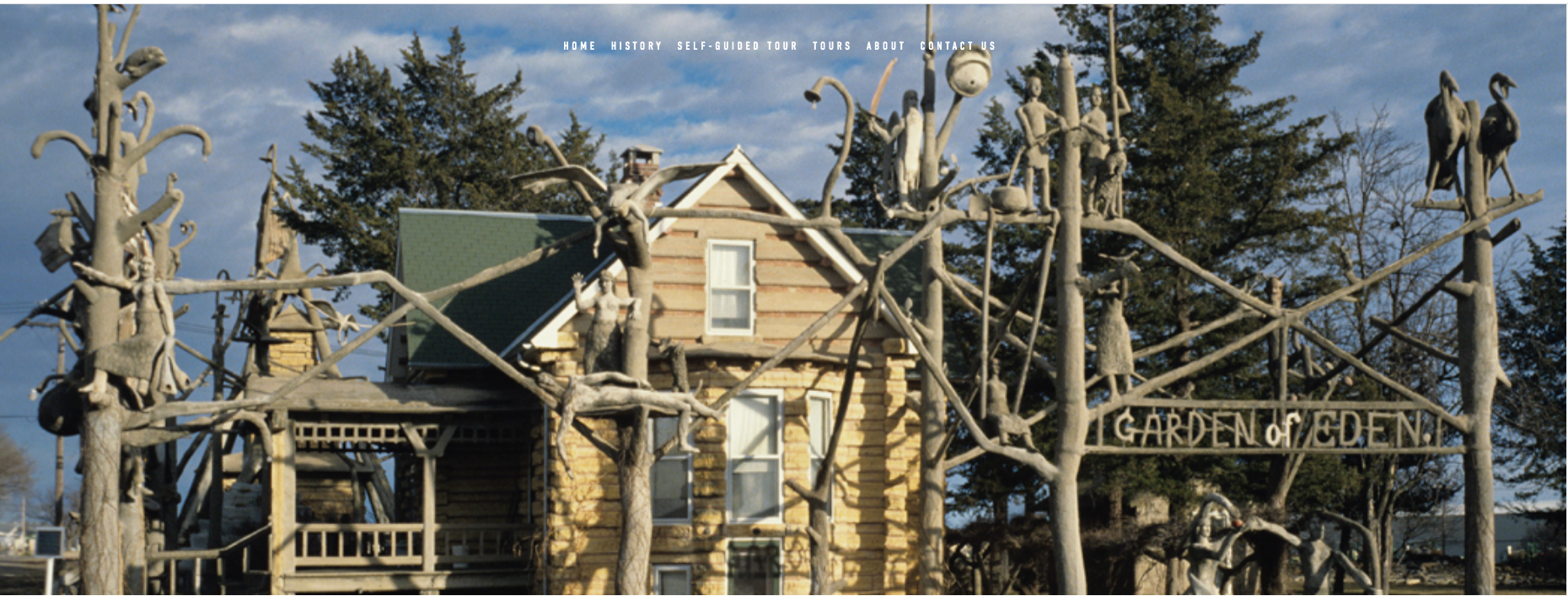
Posted By: Paul - Sun Aug 16, 2020 -
Comments (3)
Category: Art, Outsider Art, Statues and Monuments, Regionalism, 1900s
Sybil Brintrup, RIP
Alas, the world will get no more performances like this one.Obit in Spanish.
Posted By: Paul - Fri Aug 14, 2020 -
Comments (3)
Category: Art, Avant Garde, Performance Art, Ineptness, Crudity, Talentlessness, Kitsch, and Bad Art

| Who We Are |
|---|
| Alex Boese Alex is the creator and curator of the Museum of Hoaxes. He's also the author of various weird, non-fiction, science-themed books such as Elephants on Acid and Psychedelic Apes. Paul Di Filippo Paul has been paid to put weird ideas into fictional form for over thirty years, in his career as a noted science fiction writer. He has recently begun blogging on many curious topics with three fellow writers at The Inferior 4+1. Contact Us |




